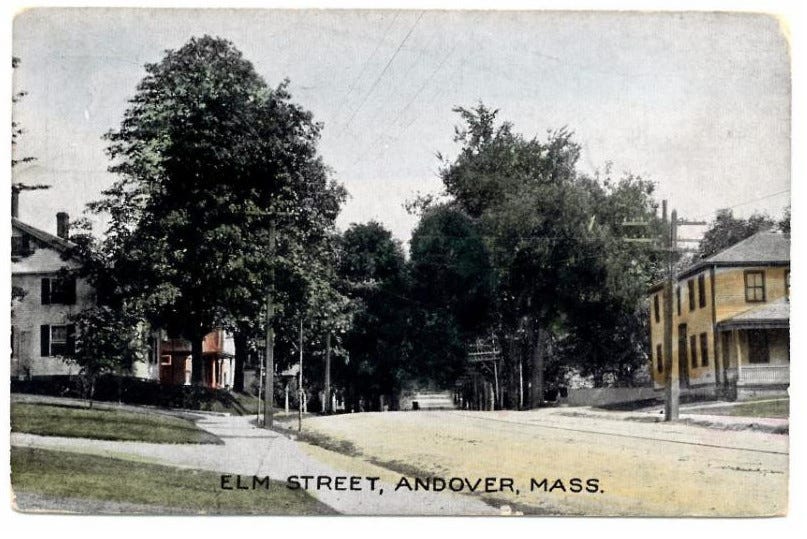Planning a quick trip to New York City? Take the subway from Elm Square! Or a flying bat ship, personal hot air balloon, or dirigible
In the early 20th c, people were hopeful about the future and innovations, especially after WWI and new technological advances. Futurists predicted a boom in technology that would make lives better.
New ideas for transportation were especially popular. Predictions included what cars of the future would like, and went beyond land transportation to personal flying devices, jet packs, and underwater travel and play.
This little 1 cent penny postcard of Andover in the Future tells us a lot about the early 20th century.
Penny Postcards
Austria was the first country to publish postcards 1869 and the idea spread quickly across Europe. The United States did not officially issue postcards until 1873, two years after Canada, and three years after most European countries.
The United States Post Office held a monopoly on printing postcards until May 1898 when Congress passed the Private Mailing Card Act, which allowed private publishers and printers to produce "postcards."
But that hadn’t stopped publishers from producing “souvenir cards” when the postcard craze started in the 1870s. The golden age of American postcards, which peaked around 1910, is why so many historical collections are filled with postcards from the turn of the last century.
Postcards and souvenir cards included exotic travel locations, World Fairs, and landmarks. They also included small towns, streets, homes, and people. Widespread fascination with technology, innovations, and visions of the future – especially transportation – also made it onto postcards.
In 1900, German candy company Theodor Hildebrand & Son produced a series of 12 color postcards with visions of the future. Some visions of the future came true: broadcast, cell phones, and self-driving cars. Other visions of the future have not been realized yet: an underwater bus carried by a humpback whale, weather-controlled cities, and personal hot air balloons that allow the user to walk on water.
Postcards of New England
The Frank W. Swallow Post Card Company in Exeter, New Hampshire was a major producer of postcards. After a two-year adventure as a car dealer, in 1905 Exeter entrepreneur Frank Swallow jumped into the postcard craze. Swallow produced hundreds of views of towns throughout New England. Rather than have color postcards printed in Germany, Swallow hired local women, known as “Swallow girls,” to hand paint each postcard in an assembly line fashion with each painting a single color. Blue for the sky, green for the grass.
The Swallow Company was also known for producing “doctored” images, like our Andover in the Future cards. The elements repeat in our two cards and in cards across New England. The company also produced more mundane views, like this Elm Street scene.
In Andover, as in many small towns, pharmacists and druggists printed local postcards to sell. The two Andover in the Future postcards (Elm Square and Ballardvale) were produced by druggists William A. Allen and Dr. Charles H. Shattuck.
Want to see more futurist postcards? Click here to visit the Andover Stories page of our website.







